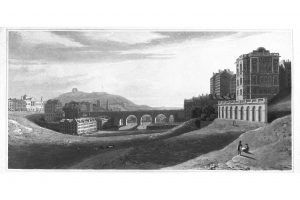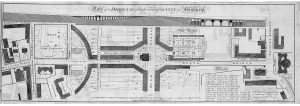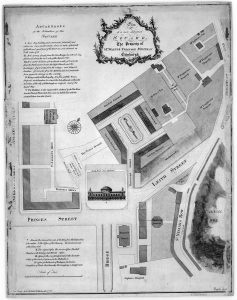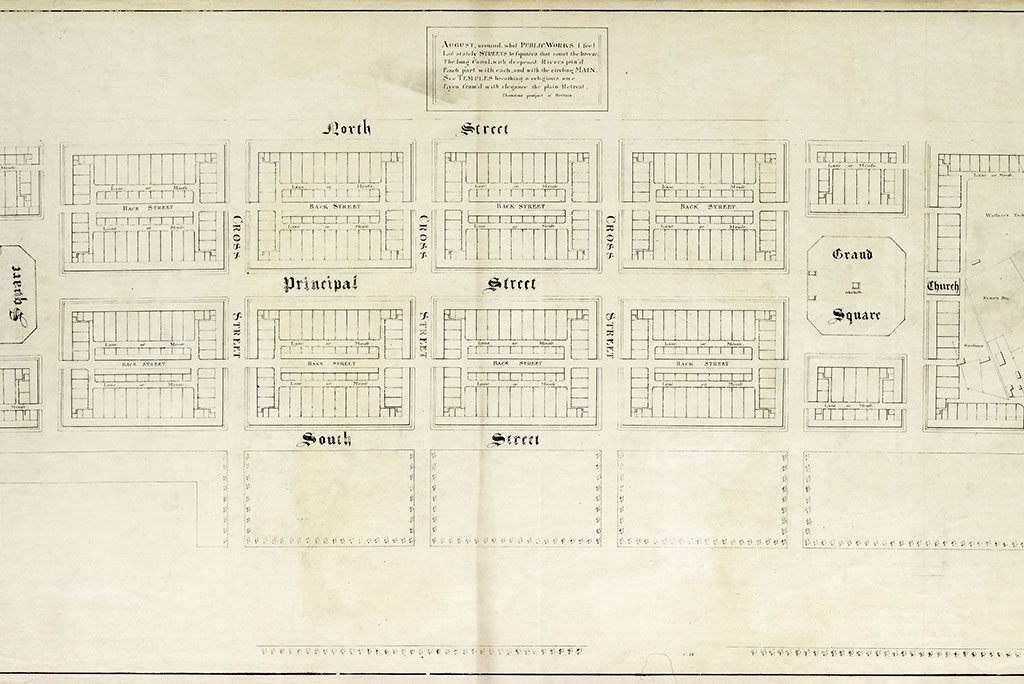Prince Harry and Meghan Markle are making their first official joint visit to Edinburgh today to celebrate the Year of Young People. While attending the firing of the One O’clock Gun, they will be looking down at Edinburgh’s New Town which was the vision of a young Scottish architect.
In the 1700s, Scotland’s capital was a very different city to the one we know now. Overcrowded and dirty, Edinburgh was a medieval settlement that had outgrown itself by the 18th Century. Prone to outbreaks of disease, building collapse and crime – a solution was needed. In response, the Town Council of Edinburgh under the leadership of Provost George Drummond, announced an architectural competition in 1766 to design a New Town for Edinburgh.
A young visionary
James Craig was born in Edinburgh in 1739. From 1748-1755 he attended the newly founded George Watson’s Hospital, which sat opposite George Heriot’s School on Lauriston Place (George Watson’s Hospital would become George Watson’s College and the land on which the original school stood was sold to the Royal Infirmary of Edinburgh). Craig left school at 16 to pursue an apprenticeship as a stonemason. During this time, he studied draughtsmanship, surveying and architectural treaties. Following the death of his father in 1762, James Craig abandoned his studies to begin working as an architect and draughtsman. In 1763, Craig’s name appeared on plans for a North Bridge over the Nor Loch.

View of the Old and New Towns of Edinburgh, connected by the first North Bridge.
Despite never taking a Grand Tour of Europe, James Craig’s plans for the New Town reflected the neo-classical style of France, Hungary, Germany and the new North American cities. This chimed well with the council’s vision to transform Edinburgh from ‘Auld Reekie’ to the ‘Athens of the North’.
This simple gridiron plan meant 26-year-old James Craig beat the other six entries to controversially win the competition. However, it took a year of wrangling between Craig and the city’s leadership before a final plan was decided in 1767.

Plan for Improving the City of Edinburgh, 1786 By James Craig. This shows James Craig’s plan to ‘bridge’ the Cowgate and make access to the southern suburbs much easier.
The birth of Edinburgh’s New Town
This may come as a shock, but originally the development wasn’t particularly popular. In fact, a £20 premium was offered to the first builder on site. To buy and build on a plot of land in the new development cost £2,000 which meant the new owners had to be very wealthy. We’re pretty sure buyers nowadays would jump at the chance to own a Georgian New Town property for that price!
The first person to build a property was developer John Young, who built Thistle Court. Soon after, the development began to flourish and Edinburgh’s New Town became the heart of the Scottish. Today, it’s part of the Edinburgh World Heritage Site.
James Craig’s influence on Edinburgh did not stop with the initial New Town development. He went on to design St James square – which coincidentally is undergoing another revamp during the Year of Young People.

St James Square Plan by James Craig Titled: ‘Plan of a new designed square. The property of Mr Walter Ferguson Writer in Edinburgh’.
To demonstrate a greater affinity for the Crown down south following the Act of Union, the street names reflected the rule of King George III. Rose Street – which Harry and Meghan will visit – represented England, while Hanover Street and Fredrick Street were symbolic of the ruling royal dynasty.
From riches to rags
Unfortunately, James Craig was not as good with money as he was at town planning. Loan debt left him with very little wealth. In 1795, he died of consumption. Penniless, his architectural books were sold off to pay off his creditors. He was buried in an unmarked family plot in Greyfriars Kirkyard. In the 1930s, the rules on monuments in Greyfriars’ churchyard changed. Subsequently, the Saltire Foundation had the grave marked.
Despite leaving this world with little more than the clothes on his back, James Craig made his mark on Scotland at a very young age. The Edinburgh skyline and its built heritage are the work of this architectural prodigy.
In 2018, let’s celebrate the incredible contributions young people have made to building Scotland, past and present.
Discover the Historic Environment Scotland archives!
The images shared in this blog are all recorded in Canmore, the national record of the historic environment. Head to the website to search the archive. What will you discover?
Make sure you subscribe to our blog so you get all the latest insights straight to your inbox.

